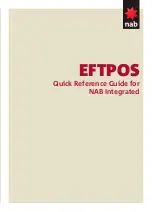
Terminal 96 00
Quick Guide
04044303 - 06//2019 - DRAFT
3/4
Fastening the mounting plate
The mounting plate can be installed directly on the wall or on a
double switch box according to DIN 49073-1. The mounting plate
has 4 fastening holes for each of the two fastening variants.
For direct fastening of the mounting plate to the wall, 4 dowels
SX6 and 4 suitable screws are included in the delivery.
For fastening the mounting plate to a switch box, 4 countersunk
screws are included in the delivery.
When mounting on different surfaces, use suitable fastening ma-
terial.
If you use other fastening screws, make sure that the flat head of
the screw disappears completely in the perforation in the mounting
plate.
The mounting plate may not be mounted twisted. The screws may
only be tightened slightly. The mounting plate may not be de-
formed or bent.
In case of soft mounting surfaces, make sure that the housing is
not pressed into the surface when mounting it. The unevenness of
the mounting surface may not exceed 0.5 mm. The unevenness of
the mounting surface may have to be compensated for or adjusted
by means of suitable measures (e.g. washers).
Connecting the network cable
The Ethernet connection (RJ45 socket) is located on the rear of the
terminal housing.
Fastening the sealing cap
The increased ingress protection according to IEC 60529 specified
in the technical data is only reached when using this additional
cable cover.
The sealing cap for cable sealing is an optional accessory of the ter-
minal 96 00.
Scope of delivery
1x sealing cap
1x seal with cable passage Ø 5.7 mm
1x seal with cable passage Ø 8.2 mm
1x self-adhesive foam strip 1.0 mm thick
1x self-adhesive foam strip 2.0 mm thick
6x fillister head self-tapping screw
1x TORX screw wrenchT6
Principle
The sealing cap is fastened to the rear of the terminal via the net-
work connection. Depending on the diameter of the network cable,
additional measures for sealing the cable entry are required.
1
Use seal with corresponding cable passage.
2
Attach a semicircular foam strip to the cable entry of the ter-
minal housing.
3
Wrap foam strip around the network cable using full circles in
the area of the cable entry.
Cable
1
2
3
Ø 4.5 mm - Ø 5.5 mm
Ø 5.7 mm
1 mm
2 mm
Ø 5.6 mm - Ø 6.0 mm
Ø 5.7 mm
-
-
Ø 6.1 mm - Ø 7.0 mm
Ø 8.2 mm
-
2 mm
Ø 7.1 mm - Ø 7.5 mm
Ø 8.2 mm
-
-
Ø 7.6 mm - Ø 8.5 mm
Ø 8.2 mm
-
1 mm
Procedure
1.
If required, attach foam strip (see table).
2.
Connect the network cable.
3.
Insert the seal with suitable cable passage (see table) into the
sealing cap.























